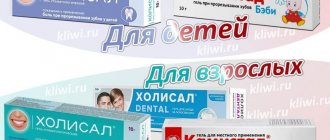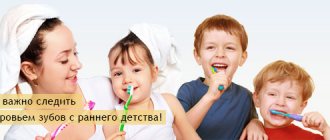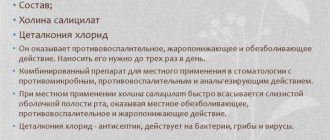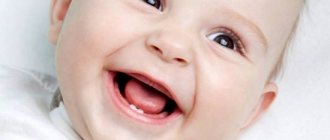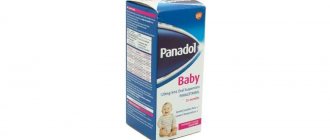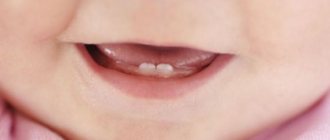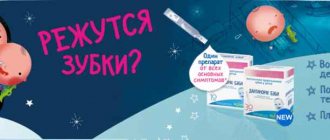One of the most popular drugs in dentistry are dental drops. This simple but effective remedy is recommended for everyone to have in their home medicine cabinet. Drops help relieve an attack of pain if a tooth suddenly hurts, and it is not possible to get qualified dental care. In this case, there is no need to take tablets; you can successfully replace them with dental drops.
Attention! Drops for toothache are a medicinal product consisting of components that have analgesic, disinfectant and anti-inflammatory properties. They are widely used to treat various dental diseases. Medicines of this type usually consist of natural ingredients. The main component, occupying about 90% of the composition of the drug, is valerian tincture. It perfectly soothes the oral mucosa. The drug also contains camphor and mint essential oils. Both of these oils disinfect the oral cavity, relieve inflammation, helping to fight pathogens living in the oral cavity. Despite its simple composition, the product is widely used among patients. Doctors also speak well of such drugs. They are effective, inexpensive and sold in almost every pharmacy. Dentists recommend using dental drops for diseases such as caries, periodontitis, gingivitis, pulpitis, periodontitis and others. The drug helps relieve almost any pain. In addition, dental drops are used to treat teeth and gums in the postoperative period.
What kind of drug is this and how does it work?
Several types of drops are used in dentistry - for teething, for inflammation (for example, gingivitis or periodontitis1), as well as for toothache. In today’s material we will talk specifically about those that relieve pain in the teeth when they hurt.
Drops are used to eliminate pain in the teeth
It is important to know! The product is intended for temporary pain relief if a person is currently unable to visit the clinic - for example, if the pain began in the evening or at night, on weekends or on holidays.
Dental pain drops are taken differently from tablets - i.e. not inside, but outside. To be more precise, the product is applied to the tooth and acts through its surface, and not through the circulatory system. By the way, in addition to relieving pain, the solution for topical use has a locally irritating or “distracting” effect, sedative (calming) and antiseptic properties.
The best gels with an analgesic effect
Analgesics that are used during teething can be divided into 2 main groups. The former contain lidocaine, benzocaine or similar local anesthetics. Others are dominated by natural ingredients.
Kamistad Baby gel
Rating: 4.9
The first nominee in our review was the German gel Kamistad Baby. It contains 2 active components: chamomile flower extract (soothes, relieves inflammation, heals mucous membranes) and polidocanol (cools and distracts the gums during teething). This remedy is suitable for small children (from 3 months), when they experience the first signs of the appearance of baby teeth.
Gel Kamistad Baby is transparent with a yellow-brown tint. Its taste is pleasant - mint-honey. It is placed in an aluminum tube with a narrow thin dispenser neck. When squeezed out, the gel does not spread because it is quite thick. The product is squeezed onto a clean finger or a cotton swab and distributed over the surface of the gums, lightly rubbing. The manipulation can be repeated 2-3 times a day. It is better to do this after feeding or before bed.
According to reviews from parents, Kamistad Baby begins to act quite quickly. Many adults have experienced it themselves, so they note that the gums seem to freeze after applying the gel. And this effect lasts 20-40 minutes. Usually, after applying this product, babies sleep peacefully for 1-1.5 hours, and then begin to act up again. Parents also note that this gel is quite sticky and they do not feel comfortable using it.
Advantages
- lack of lidocaine;
- convenient tube with a dispensing spout;
- pleasant aroma;
- quickly relieves pain.
Flaws
- short term effect.
Kalgel
Rating: 4.8
Polish dental gel Kalgel contains 2 active ingredients: lidocaine (causes local anesthesia) and cetylpyridinium chloride (has an antiseptic effect). With these remedies it is possible to reduce pain and relieve the inflammatory process on the gums during teething. This medicine is suitable for use if the child is already 3 months old.
Kalgel is a homogeneous, soft gel. There are no grains or inclusions in it. Its color is yellow-brown, close to amber. Kalgel's aroma is quite specific. It is packaged in aluminum tubes in quantities of 10 g. It is enough to take a small pea of the product with a clean finger and carefully distribute it over the painful area, lightly massaging the gums. After 20 minutes, Kalgel can be reapplied. You can do such manipulations a maximum of 6 times per day.
The effect of this remedy develops immediately. The lidocaine contained in the product freezes the gums and all negative symptoms temporarily alleviate the child’s condition. However, this pain relief effect does not last very long and after 40-60 minutes the baby begins to experience pain again. It should also be borne in mind that lidocaine is a potentially dangerous substance for children and can cause a number of negative consequences.
Advantages
- quickly relieves pain;
- pleasant organoleptic properties;
- Allowed for children from 3 months.
Flaws
- relieves pain for a short time.
Dentinale Natura gel
Rating: 4.7
Italian gel Dentinail Nature contains 3 natural active ingredients: aloe vera juice, boswellia and chamomile extracts. With Dentinale natura, the gums become less sensitive during teething, and their irritation and inflammation decrease. With this remedy, the period of appearance of baby teeth will be more comfortable and the use of synthetic anesthetics and analgesics will be avoided.
Dentinyl Natura is in an aluminum tube (20 ml). This gel is transparent with a yellowish tint. It has a pleasant, menthol taste. You can apply the medicine using a washed finger. During manipulation, everything should be done very delicately. You can repeat the procedure of applying Dentinyl up to 5 times a day. After this, you should not feed the child or give him anything to drink for half an hour.
From the reviews it follows that Dentinale natura begins to act 5-10 minutes after application. With this remedy, the child quickly falls asleep and can sleep peacefully for more than 2 hours. This drug is used quite economically and with it you can “grow” even a single tooth. This product is safe even if a child swallows it. But in some especially sensitive babies, it can still provoke allergic reactions.
Advantages
- natural components of the composition;
- absence of lidocaine, parabens, sugar;
- pleasant taste characteristics;
- relieves pain quite quickly.
Flaws
- May cause allergies in some.
Baby Doctor gel first teeth
Rating: 4.6
Israeli gel Baby Doctor first teeth contains 5 medicinal plants. Together, these herbal components make it possible to relieve inflammation on the gums, relieve severe pain, and heal the mucous membrane that is damaged during the eruption of baby teeth. This medicine can be used by patients who are already 3 months old.
Gel Baby Doctor is completely transparent and quite thick. It comes in a soft plastic tube. Its taste is slightly sour, herbal, with hints of mint. The gel is recommended to be applied to the child’s gums when the first signs of trouble appear during teething. This is done with a well-washed finger. The manufacturer states that this product is safe if swallowed by children.
Usually the effect of Baby Doctor develops almost immediately and lasts for 3 hours. At this time, the child stops putting fingers and toys into his mouth. This drug clearly eliminates itching on the gums for a while. However, there is no lidocaine in the composition, so this remedy does not have pronounced pain relief. In addition, some parents are confused by the presence of methylparaben in the composition.
Advantages
- the composition is rich in natural ingredients;
- does not contain lidocaine;
- pleasant to use;
- perfectly eliminates itching on the gums.
Flaws
- contains methylparaben.
Dentinox
Rating: 4.5
Another worthy nominee in our review was the German Dentinox gel. It contains 3 active components: chamomile (excellently relieves inflammation), lidocaine (causes local anesthesia), lauromacrogol 600 (enhances the therapeutic effect of lidocaine). It is actively used in pediatrics during teething, during which the gums become inflamed, irritated and very painful.
Dentinox gel is homogeneous, slightly cloudy. Its color is greenish-yellow. The aroma smells of chamomile and menthol. It is packaged in metal tubes in quantities of 10 g. The product can be applied with a clean finger or a cotton swab. It is enough to take a small pea of the product and delicately apply it to the painful area, rubbing lightly. The procedure can be repeated up to 3 times a day. It is correct to do this after feeding and before bedtime.
Despite the presence of lidocaine in the composition, which not all parents favor, there are many positive reviews about Dentinox. The product begins to act 2-3 minutes after it is distributed over the area where teething occurs. Its analgesic effect is enough for the child to fall asleep peacefully. Usually the drug is well tolerated, but in some babies it can provoke allergies.
Advantages
- effectively eliminates pain;
- has an antiseptic effect;
- pleasant to use;
- the action develops 2-3 minutes after application.
Flaws
- may cause an allergic rash.
Holisal
Rating: 4.5
Polish gel Cholisal contains 2 active ingredients: choline salicylate (locally eliminates pain, inflammation, hyperthermia), cetalkonium chloride (has an antiseptic effect). The adhesive base of the product contains ethyl alcohol, so the effect when applying Cholisal develops quickly, and the active ingredients themselves remain on the mucous membrane longer. This product is approved for children over 1 year of age.
You can buy 10 or 15 g of Cholisal. It is placed in metal tubes. The gel is homogeneous, transparent, colorless. The aroma is anise, pronounced. When teething, a strip of the product (about 0.5 cm) is squeezed onto a clean finger and gently rubbed into the painful area, gently massaging the gums. It is allowed to use Cholisal 2-3 times a day.
The child usually calms down 3-5 minutes after applying the product to the area where teething occurs. The pain relief effect lasts differently for everyone, but it usually lasts 2-8 hours. However, adults note that most often there is a short-term mild burning sensation at the sites where the drug is applied. Many people like that this product does not contain lidocaine and sugar.
Advantages
- good combination of active ingredients;
- lack of sugar and lidocaine in the composition;
- comfortable gel to use;
- quickly relieves pain.
Flaws
- A slight burning sensation is felt immediately after application.
Pansoral first teeth
Rating: 4.5
French oral gel Pansoral first teeth contains liquid extracts of chamomile, marshmallow, saffron, and Irish moss among its active ingredients. Has anti-inflammatory, analgesic, antimicrobial effects. This product does not contain lidocaine and is suitable for babies from 4 months.
Pansoral first teeth is sold in soft tubes of 15 ml. It is a transparent gel with a yellowish tint. The product has no smell. The consistency is moderately liquid. The product is easily squeezed out of the tube and is well distributed over the gums. Apply the medicine with a clean finger and lightly massage the painful area. The manipulation is repeated as necessary.
Parents report that in the beginning it is quite difficult to get used to applying this product correctly. But when this begins to work out, the analgesic effect becomes more pronounced. From the reviews it follows that Pansoral is consumed very economically. But some parents are confused that this product contains parabens, and also that there are no instructions in Russian.
Advantages
- contains many medicinal plants;
- pleasant gel consistency;
- when applied correctly, it provides excellent pain relief;
- economically used.
Flaws
- contains parabens;
- no instructions in Russian.
What's included
The composition of the product consists of only three active ingredients, familiar to almost every person. This includes the following components:
- peppermint leaf oil,
- tincture of medicinal valerian,
- camphor (but not natural, but synthetic).
The drug has plant components.
Most of the mass of the transparent solution is occupied by natural plant substances, which give it a reddish-brown color and a specific smell.
The drug is packaged in dark glass bottles of 10-15 ml.
Can it be used in children?
Manufacturers indicate that toothache drops are indicated only for adults and children over 12 years of age. Moreover, from 12 to 18 years of age, the product should be used with caution. That is, for those children whose age has not yet reached 12 years, this drug is contraindicated - and you need to look for alternatives (for example, tablets and syrups based on ibuprofen or paracetamol).
The use of the drug is contraindicated for children under 12 years of age.
On a note! Children's drops can be used from a very early age - but only if this remedy is not for pain in the tooth itself, but during its eruption. Such drugs include, for example, the “Dantinorm Baby” or “Dentinox” solution.
Rating of the best teething remedies
| Nomination | Place | Name | Price |
| The best gels with an analgesic effect | 1 | Kamistad Baby gel | 305 ₽ |
| 2 | Kalgel | 460 ₽ | |
| 3 | Dentinale Natura gel | 860 ₽ | |
| 4 | Baby Doctor gel first teeth | 340 ₽ | |
| 5 | Dentinox | 320 ₽ | |
| 6 | Holisal | 390 ₽ | |
| 7 | Pansoral first teeth | 402 ₽ | |
| The best organic and homeopathic remedies | 1 | Dantinorm Baby | 540 ₽ |
| 2 | Dentokind | 570 ₽ | |
| 3 | Viburkol | 430 ₽ | |
| 4 | Boiron Camilia | 700 ₽ | |
| 5 | Christopher's Original Formulas Kid-e-Col Extract | 1940 ₽ |
Instructions for use and side effects
You can understand how to use dental drops by reading the brief instructions. Manufacturers recommend moistening a small cotton swab with 2-3 doses of the product (i.e. 2-3 drops) and applying it to the sore tooth. However, this technique does not help some patients; then it is advised to apply 2-3 doses of liquid on a cotton swab and lubricate the entire surface of the diseased tooth.
Manufacturers recommend moistening a small cotton swab
Interesting to know! How to use dental drops for toothache if there is a carious cavity in the tooth (in other words, a “hole”)? Here, experts recommend placing a cotton swab moistened with a solution into the desired cavity - this way the components of the drug will quickly penetrate to the source of pain.
A child’s baby tooth hurts and is loose: treat or remove
Sometimes a child's front baby tooth hurts and becomes loose. Increased mobility can be caused by a planned change of bite or injury. A child’s front teeth hurt after an unsuccessful fall, a blow in the sports section, or minor bicycle accidents. A doctor will be able to remove the consequences of mechanical impact after an x-ray and examination of the oral cavity.
If a permanent tooth is cut under a temporary tooth, and this causes pain, the doctor, of course, will recommend removal. But this is the only option when removal is preferable. In all other cases, teeth with primary temporary occlusion should be protected - fillings should be placed, caries and pulpitis treated, and gum inflammation relieved. It is not worth getting rid of a diseased tooth in the hope of a permanent bite - with early removal, pathological changes in the primary and permanent units and serious orthodontic problems in the future are possible.
Precautions and special instructions
Since the drug is prohibited for oral administration, because In this case, it may cause nausea or diarrhea, so it should be kept out of the reach of children. And it is better to use the product away from cats, who react strongly even to the smell of valerian.
Special instructions! The drug reduces concentration, therefore it is not recommended for people whose occupation involves traffic - road, rail, aviation, as well as with dangerous mechanisms, and working at heights.
People with allergies should use the drops with caution.
The presence of plant components in the composition can provoke allergies, especially if a person has a predisposition. Therefore, carefully monitor the body’s reaction - the appearance of a rash, itching, difficulty breathing (especially dangerous!) is a need to stop the drug and see a doctor immediately.
Popular varieties and their names
Most manufacturers did not change the name of drugs for toothache, which became famous back in Soviet times. Products called “Dental drops” or “Dental drops” can be found in almost any pharmacy. The drug is also produced under the brand name “Dentaguttal”. The composition and concentration of active ingredients in all preparations are the same.
The production of anesthetic solutions is carried out by Russian laboratories - “Moscow Pharmaceutical Factory”, “Yaroslavl Pharmaceutical Factory”, “Ivanovo Pharmaceutical Factory”, “Samaramedprom”, “Tula Pharmaceutical Factory”. There are also several factories producing this product in the CIS countries.
Safe pain relief
Dental treatment during pregnancy provides high-quality pain relief. For this purpose, local anesthetics of the latest generation are used, which do not cross the placental barrier. Many formulations include a vasoconstrictor component, which increases the effectiveness of the anesthetic. In preparations for pregnant women, the concentration of this component is slightly lower. It does not affect blood flow in the placenta and uterus.
There are several local anesthetics approved for use in pregnant women:
- Ultracaine,
- Lidocaine,
- Mepivacaine (Scandonest)
They do not have a systemic effect and are harmless to the baby and pregnant woman.
Which is better - drops or tablets, important nuances of use
If we compare drops for toothache and painkillers, then a lot will depend on the initial condition of the tooth and the person’s pain threshold. Dental drops have a quick and effective effect if the “nerve” is preserved in the tooth - a neurovascular bundle in the internal cavity.
But if the tooth was once treated for pulpitis or periodontitis, and now the pain has returned, then tablets will be more effective. Since the dental nerve is no longer present, the drops simply will not work in this case.
In some cases, it is more advisable to use tablets
“I had a bad toothache during the May holidays; we were just visiting my grandmother outside the city - so there were no hospitals or pharmacies nearby. And my grandmother offered me dental drops (I had never even heard of these, but they, it turns out, are considered an old and proven remedy in our family!!) What’s great is that they really helped me “live” these days to the dentist. But my husband tried it a few weeks later and it didn’t work on him.”
Yulia R., 33 years old, review from woman.ru
